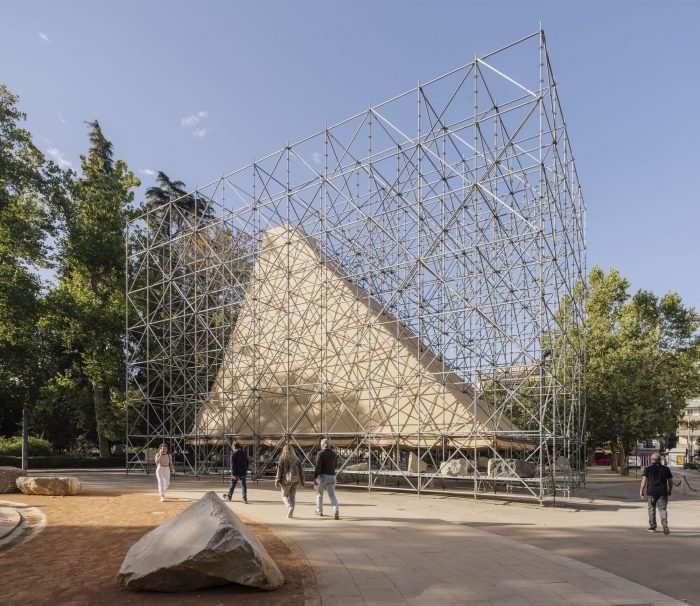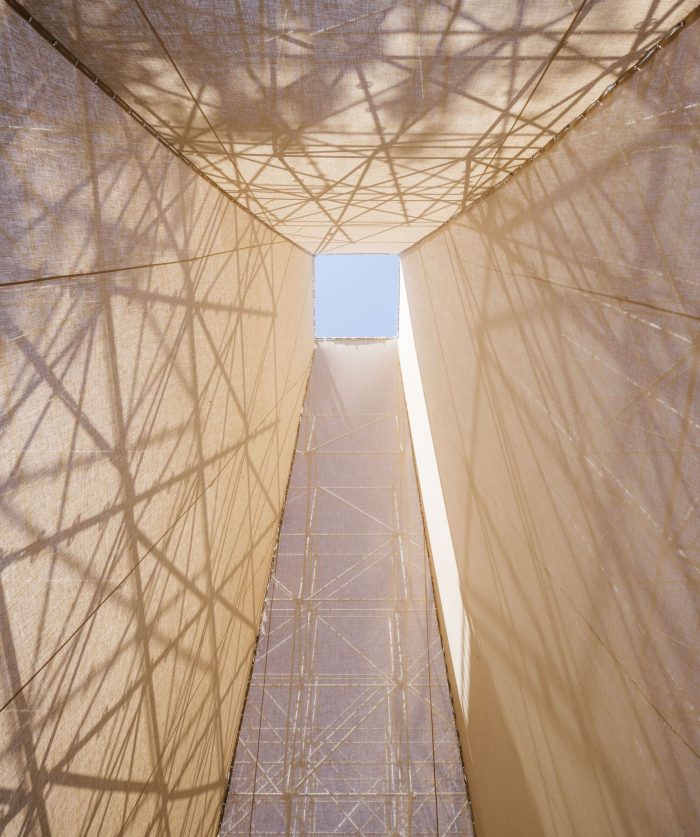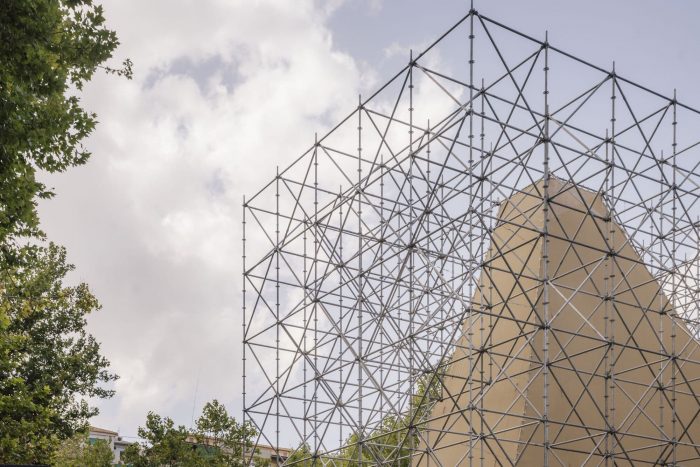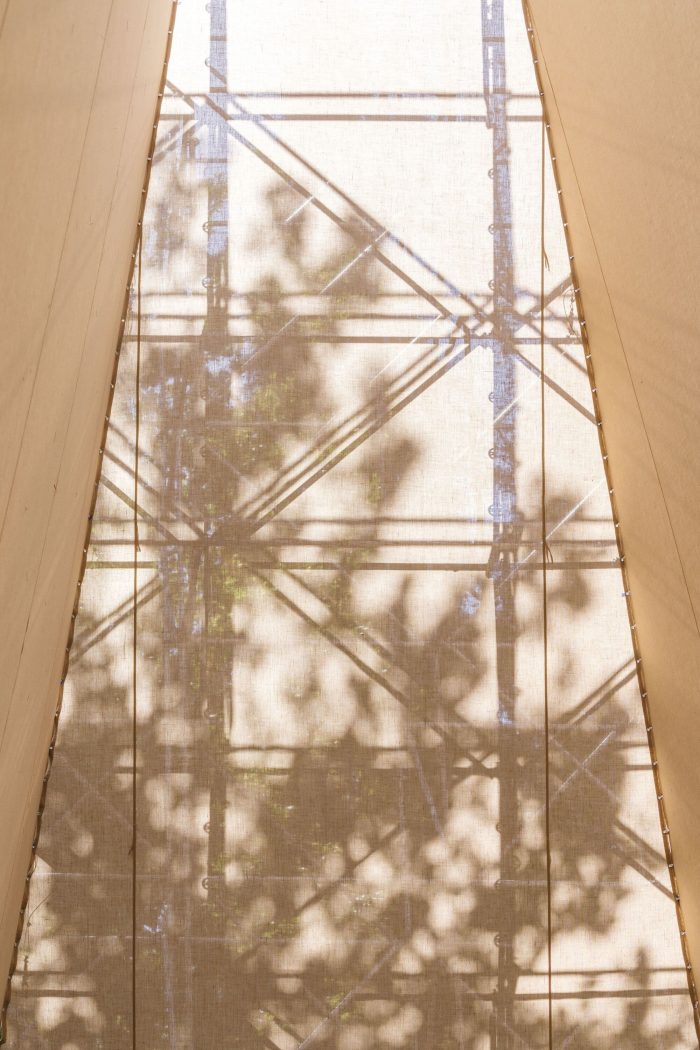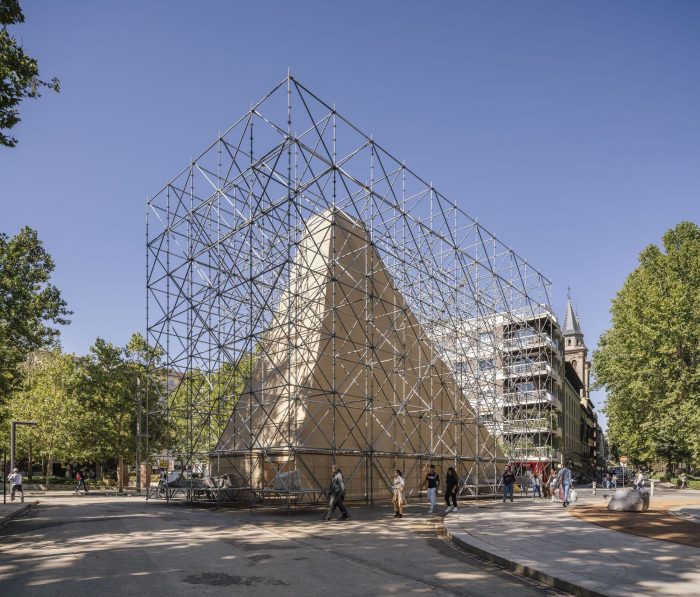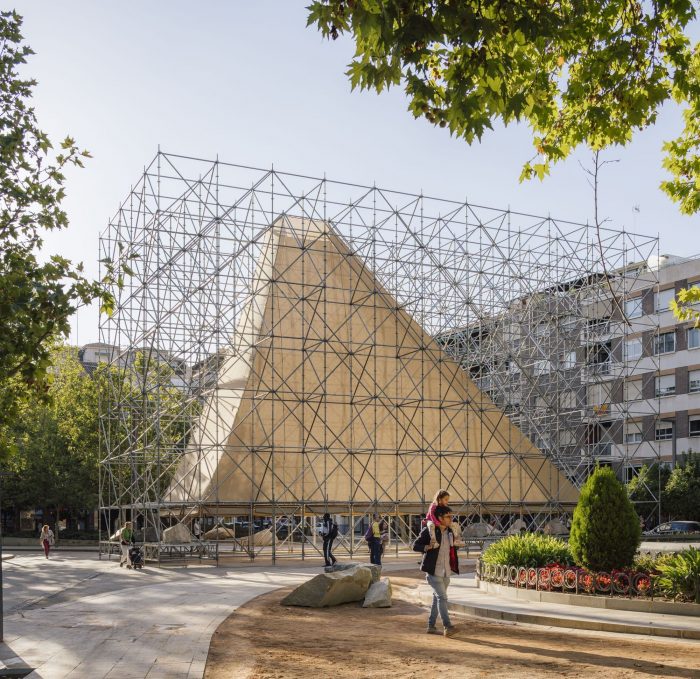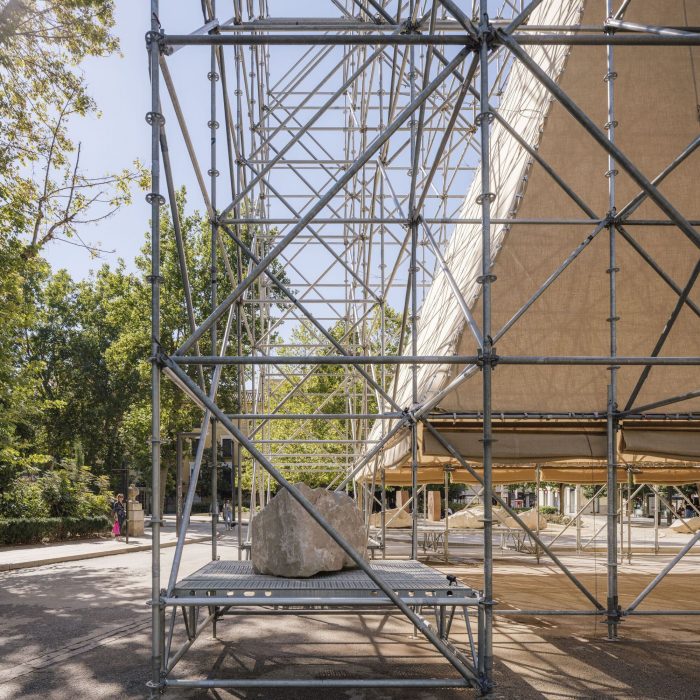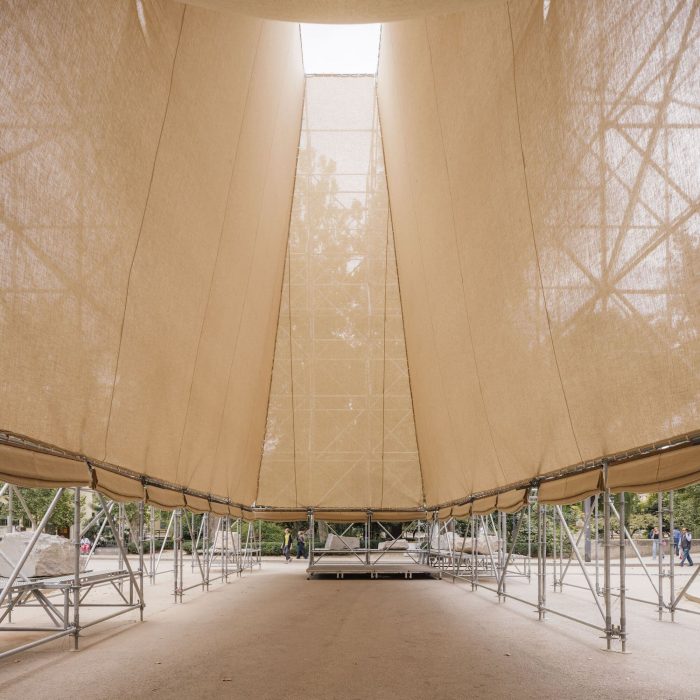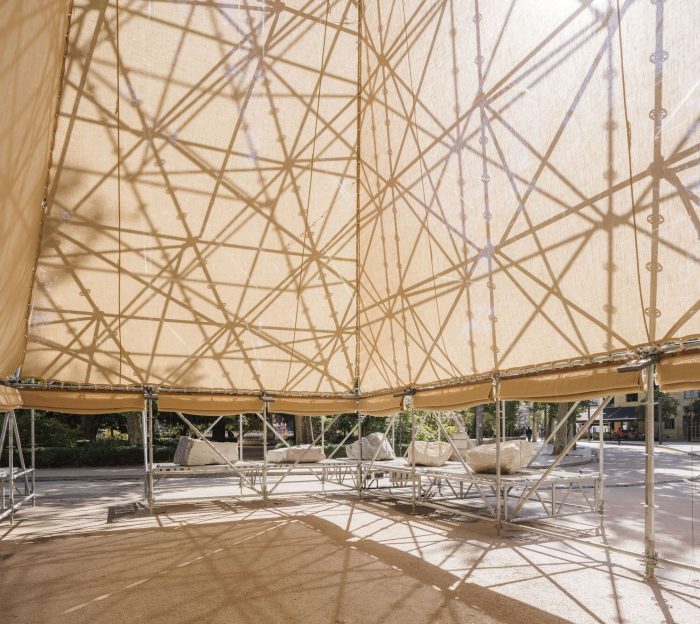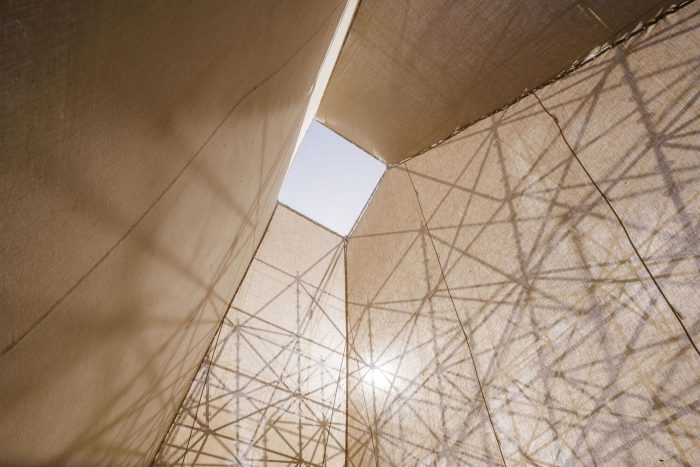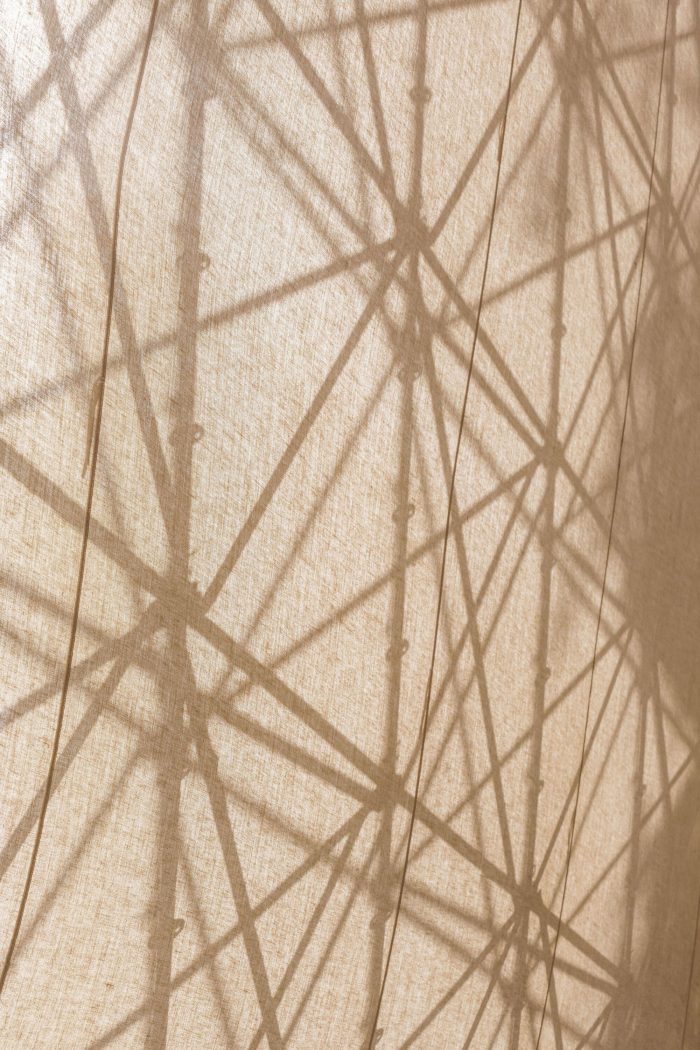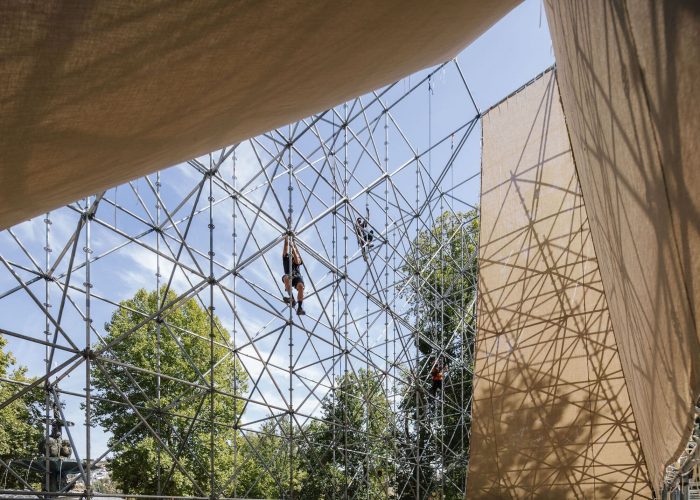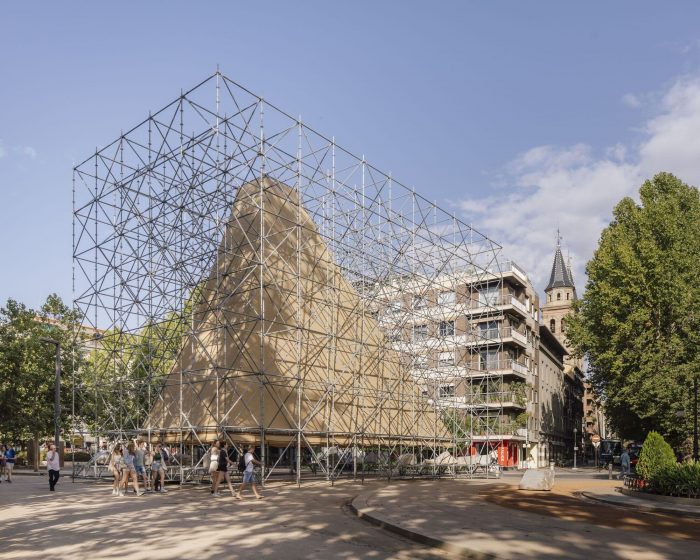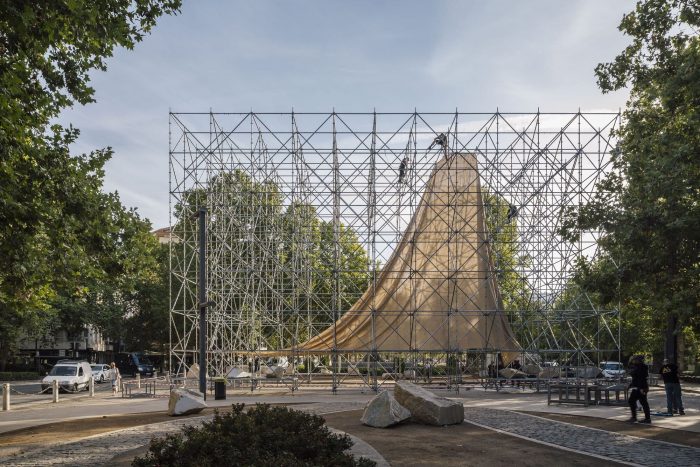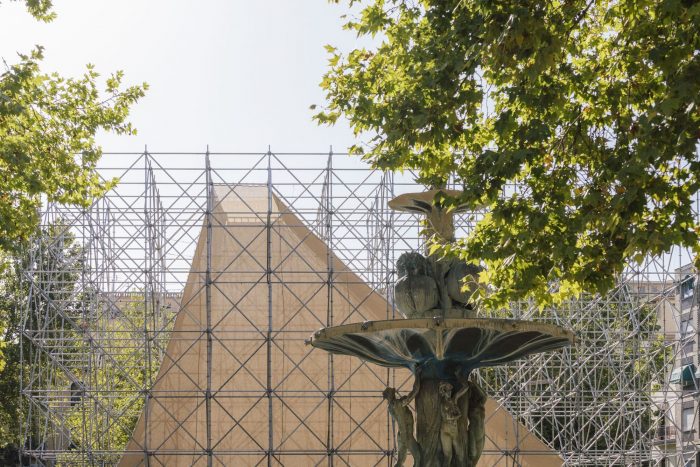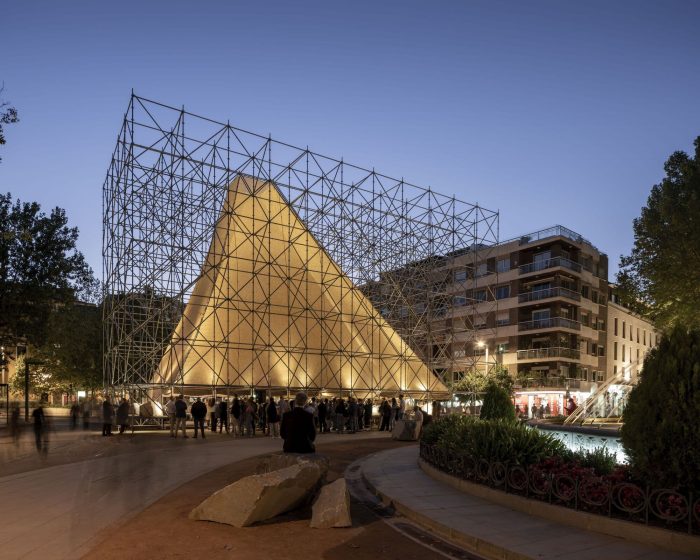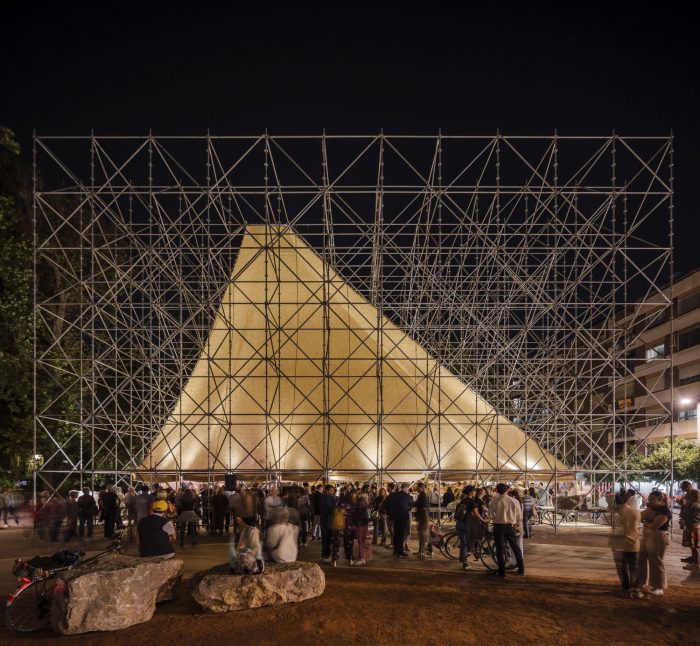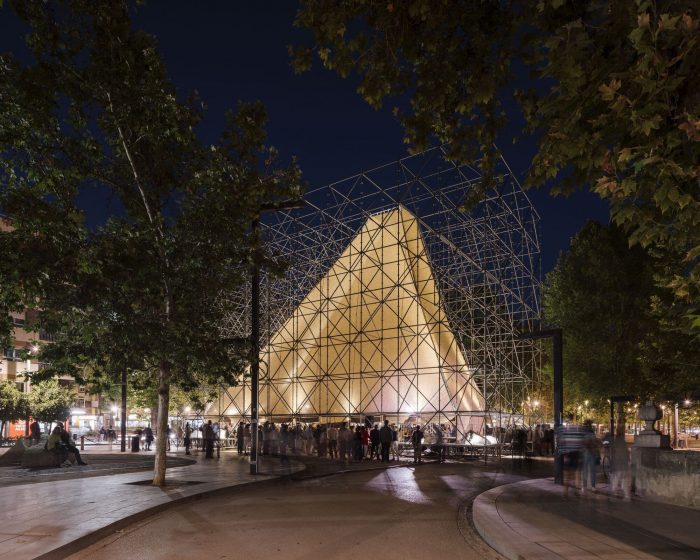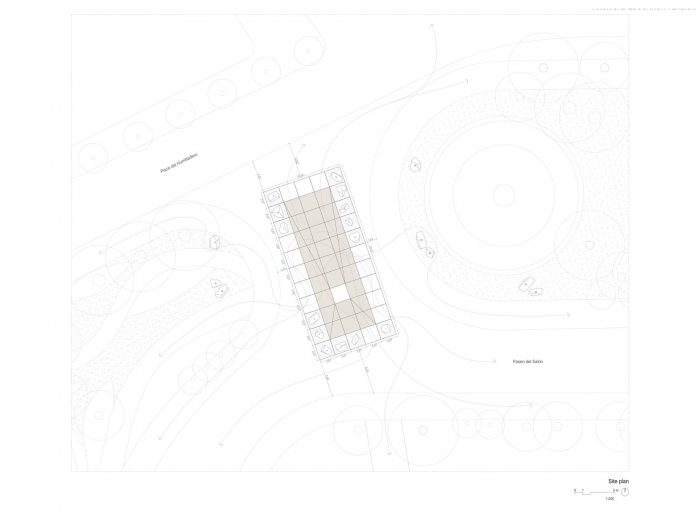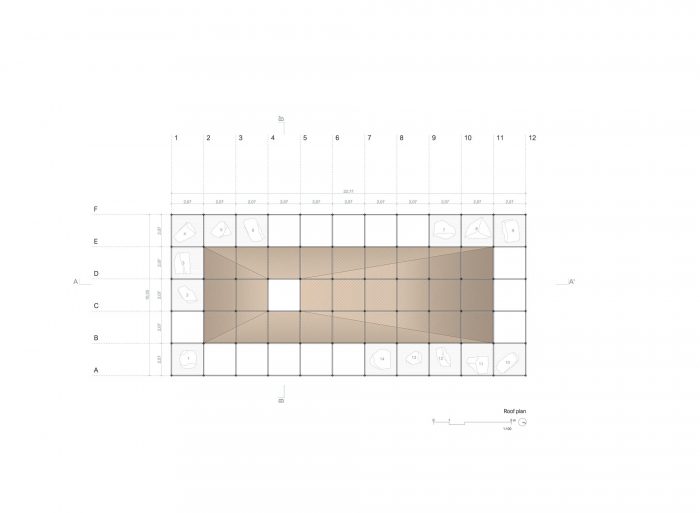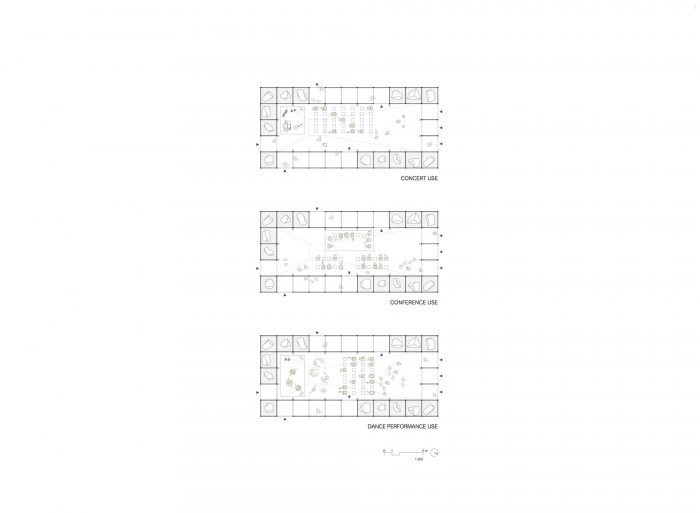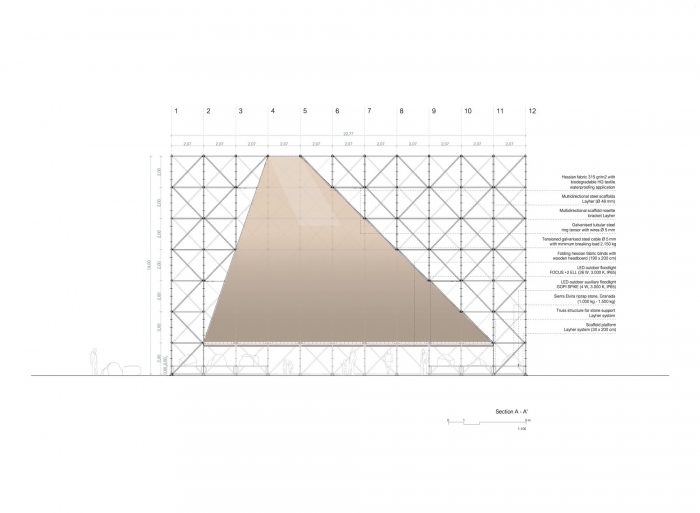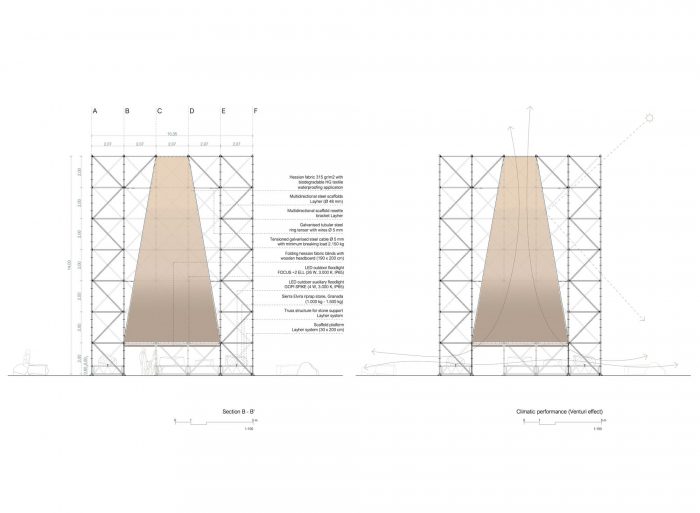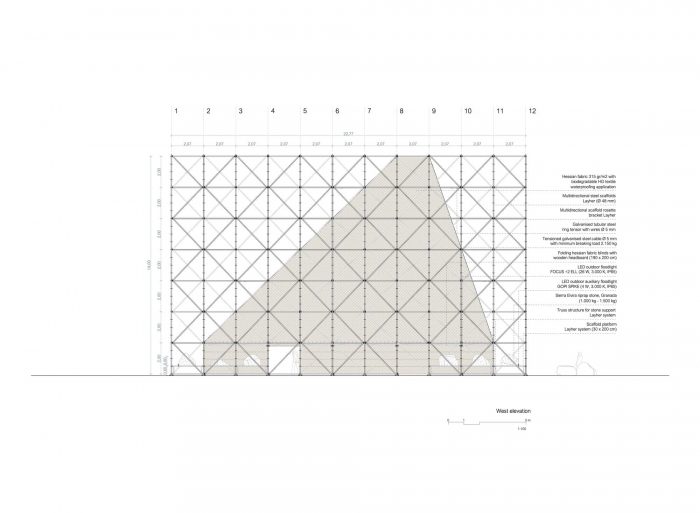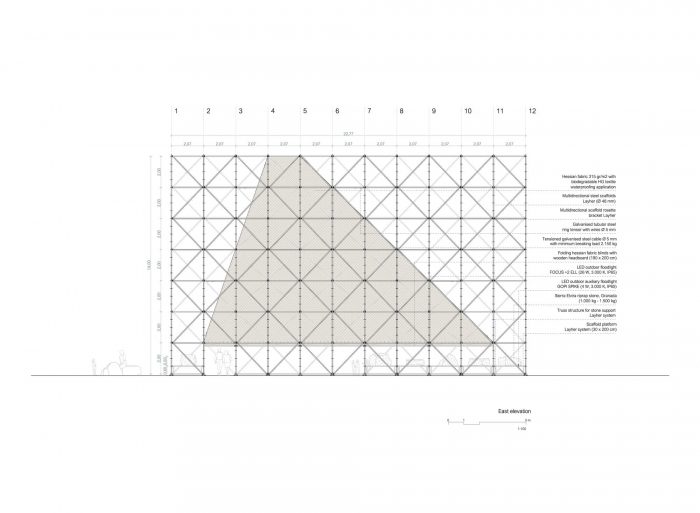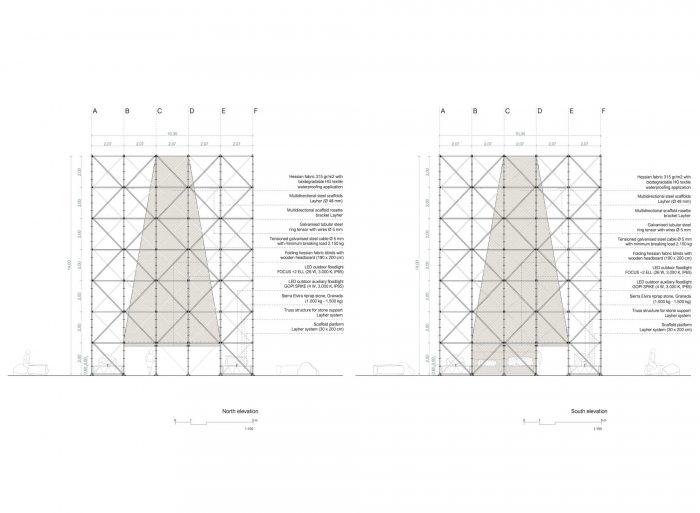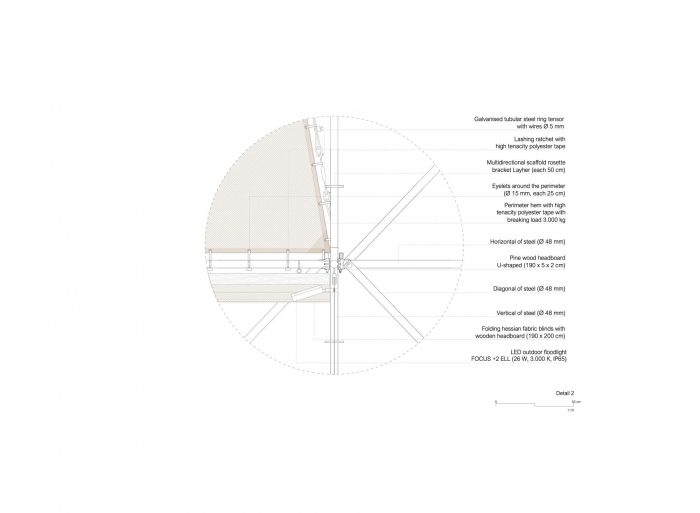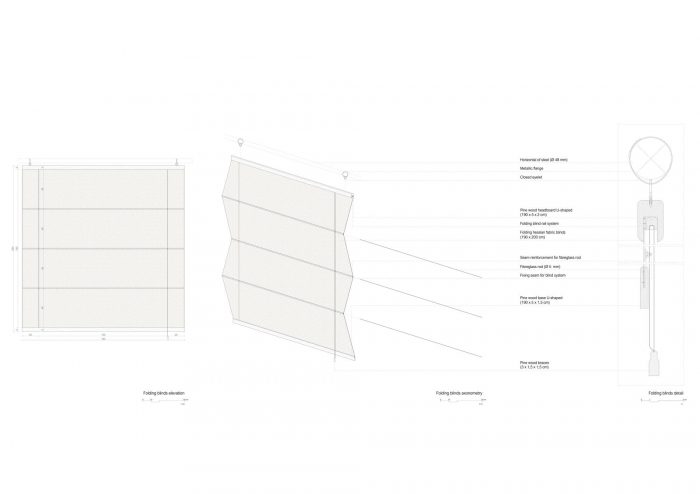艾尔亭是建立在对短暂的、脆弱的和非物质的想象上的,暗指建筑中最基本的和无形的元素之一。就像发生在沙漠中间的帐篷里以保护太阳,或发生在由一系列桅杆支撑的马戏团的通风空间里一样,一个反映未完成或正在以其所有的肉体被竖立起来的状况的形象,一个半成品的建筑,被构造出来。因此,展馆的空间策略综合了包含AIRE的基本操作,它将定义一个不确定的空间,对TAC! 节日和格拉纳达市及其居民的多种需求;促进空间的转变和适应性,而不需要比打开或关闭定义它的脆弱限制更大的操作。
Aire pavilion is built on the imagination of the ephemeral, the fragile, and immaterial, alluding to one of the most essential and intangible elements of architecture. As occurs in a tent in the middle of the desert to protect from the sun, or in the airy space of the circus supported by a series of masts, an image that reflects the condition of the unfinished or in the process of being erected with all its corporeity, a half-finished architecture, is constructed. Thus, the spatial strategy of the pavilion is synthesized in the elementary operation of containing the AIRE that will define an indeterminate space, open to the multiple needs of both the TAC! Festival and the city of Granada and its inhabitants; promote the transformation and adaptability of the space, without requiring greater operations than opening or closing the fragile limit that defines it.
Aire仅通过三种材料策略来解决,这些策略试图建立一个综合、建设性的真实性和可持续性的练习。首先,一个脚手架系统,反映了工业系统化,虽然它起源于建筑传统的最初阶段,但今天代表了建筑的模块化和全球化,以及短暂性和明显的脆弱性,一旦工作完成,它就注定要消失。这个系统解决了展馆的承重结构;一个抗性的织物与一个较轻的织物相连,一个麻布的信封,一个地方的象征,手工艺,阴凉处(或光的控制),传统和乡土知识,可识别的,该地区的平民。拯救格拉纳达自身身份和气候的一种方式。最后,一组来自Sierra Elvira的碎石为结构提供了必要的配重,并在亭子的周围实施了新的城市家具,将干预与Humilladero广场连接起来。
Aire is resolved solely by means of three material strategies, which seek to establish an exercise in synthesis, constructive veracity, and sustainability. Firstly, a scaffolding system, a reflection of industrial systematization, which, although it has its origins in the very beginnings of the architectural tradition, today represents modularity and globalization in construction, as well as ephemerality and apparent fragility, which is condemned to disappear once the work is finished. This system resolves the load-bearing structure of the pavilion; a resistant fabric that is linked to a lighter one, an envelope of hessian fabric, a symbol of locality, handicraft, the shade (or the control of light), tradition and vernacular knowledge, the recognizable, the commonplace of the area. A way of rescuing Granada’s own identity and its climate. Finally, a group of riprap stones from Sierra Elvira provides the necessary counterweight to the structure and implements new urban furniture in the surroundings of the pavilion, connecting the intervention with the Plaza del Humilladero.
Aire仅通过三种材料策略来解决,这些策略试图建立一个综合、建设性的真实性和可持续性的练习。首先,一个脚手架系统,反映了工业系统化,虽然它起源于建筑传统的最初阶段,但今天代表了建筑的模块化和全球化,以及短暂性和明显的脆弱性,一旦工作完成,它就注定要消失。这个系统解决了展馆的承重结构;一个抗性的织物与一个较轻的织物相连,一个麻布的信封,一个地方的象征,手工艺,阴凉处(或光的控制),传统和乡土知识,可识别的,该地区的平民。拯救格拉纳达自身身份和气候的一种方式。最后,一组来自Sierra Elvira的碎石为结构提供了必要的配重,并在亭子的周围实施了新的城市家具,将干预与Humilladero广场连接起来。
Aire is resolved solely by means of three material strategies, which seek to establish an exercise in synthesis, constructive veracity, and sustainability. Firstly, a scaffolding system, a reflection of industrial systematization, which, although it has its origins in the very beginnings of the architectural tradition, today represents modularity and globalization in construction, as well as ephemerality and apparent fragility, which is condemned to disappear once the work is finished. This system resolves the load-bearing structure of the pavilion; a resistant fabric that is linked to a lighter one, an envelope of hessian fabric, a symbol of locality, handicraft, the shade (or the control of light), tradition and vernacular knowledge, the recognizable, the commonplace of the area. A way of rescuing Granada’s own identity and its climate. Finally, a group of riprap stones from Sierra Elvira provides the necessary counterweight to the structure and implements new urban furniture in the surroundings of the pavilion, connecting the intervention with the Plaza del Humilladero.
通过这种方式,Aire “上升”,正如它自己的词源所表明的那样,在寻找光线,形成一个在脚手架和麻布之间编织的亭子,建立一个多样化、开放、不确定和灵活的相遇的新场景,这将允许新的关系和用途被编织到格拉纳达的Humilladero广场。
In this way, Aire “rises”, as its own etymological origin indicates, in search of light, taking shape as a pavilion woven between scaffolding and hessian fabric, establishing a new scenario of diverse, open, indeterminate, and flexible encounters that will allow new relationships and uses to be woven into the Plaza del Humilladero in Granada.
Architects: P+S Estudio de Arquitectura
Area : 2540 ft²
Year : 2022
Photographs :Imagen Subliminal (Rocío Romero + Miguel de Guzmán) + Javier Callejas
Manufacturers : AutoDesk, GRAPHISOFT, Adobe Systems Incorporated, Canteras y Excavaciones Hermanos Arroyo, Cordeleria Mulhacen, Disur, Gruas Jaldo, Grupo Cero, HG, LAYHER
Lead Architects : Francisco Parada, Laura R. Salvador
Team : Ricardo Sousa Melo, Paloma Pantoja Gallinal
Program : Pabellón de usos múltiples
City : Granada
Country : Spain


